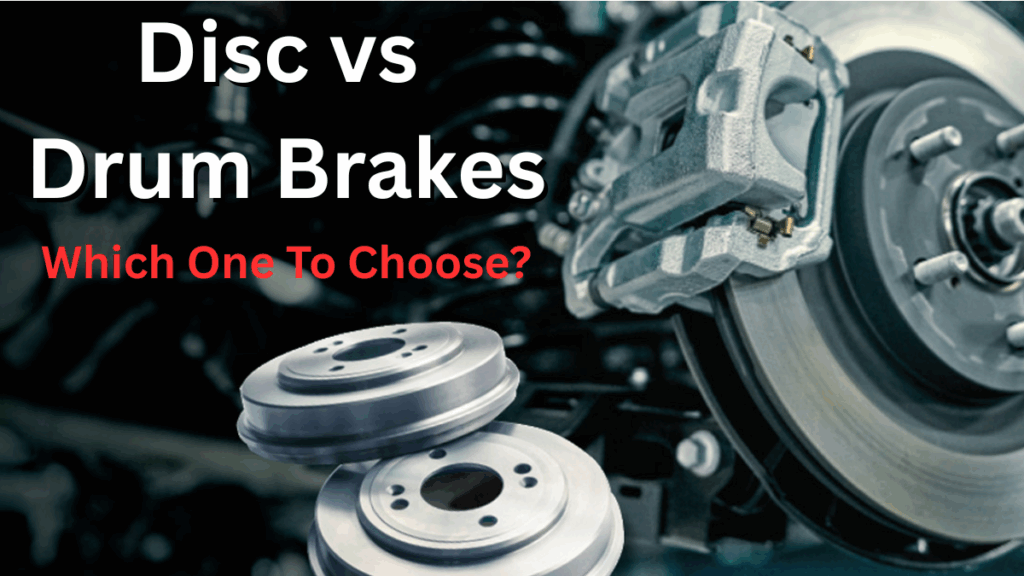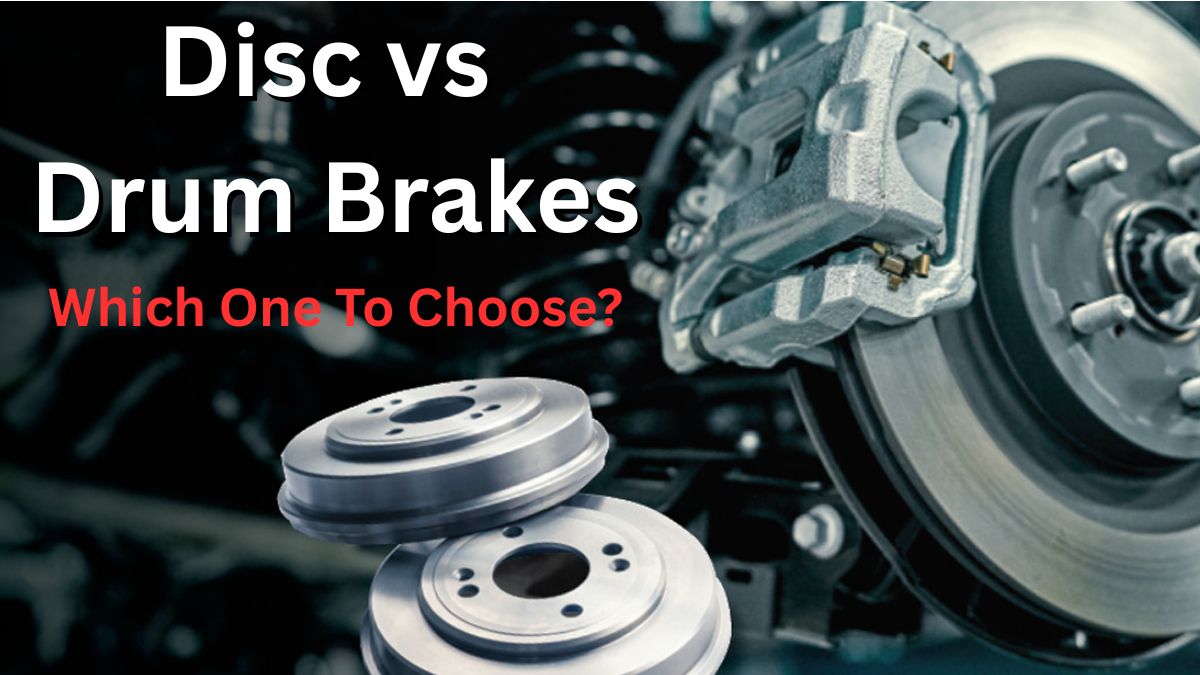Choosing the right braking system for your vehicle is crucial for safety, performance, and longevity. Whether you’re driving a car or riding a bike, understanding the comparison between disc and drum brakes can help you make an informed decision. This braking system guide breaks down the essentials of each brake type to help you decide which suits your vehicle best.

What Are Disc Brakes and Drum Brakes?
Before diving into the pros and cons, let’s clarify what these two braking systems are:
Disc Brakes
-
Use a flat, rotating disc (rotor) attached to the wheel
-
Brake pads squeeze the disc to create friction, slowing down the vehicle
-
Commonly found on modern cars and high-performance bikes
Drum Brakes
-
Feature a drum attached to the wheel
-
Brake shoes inside the drum press outward against the drum’s interior to stop the wheel
-
More traditional, often found in older or budget vehicles and on the rear wheels of some cars
Comparison Between Disc and Drum Brakes: Key Differences
| Feature | Disc Brakes | Drum Brakes |
|---|---|---|
| Stopping Power | Superior stopping power, better heat dissipation | Less effective, prone to overheating |
| Maintenance | Easier to inspect and replace pads | More complex and costly to maintain |
| Performance in Wet Conditions | Performs better, less affected by water | Performance drops significantly when wet |
| Cost | Generally more expensive | Cheaper to manufacture and repair |
| Durability | Longer-lasting pads, better heat management | Brake shoes wear out faster, drum can warp |
| Usage | Common in front wheels of cars and bikes | Often found on rear wheels or older vehicles |
Why Choose Disc Brakes?
Disc brakes have become the standard for most vehicles, especially when it comes to safety and performance. Here’s why:
-
Better Heat Management: Disc brakes dissipate heat quickly, reducing brake fade during heavy or continuous braking
-
Consistent Performance: Their braking power stays strong even in wet or adverse conditions
-
Easier Maintenance: Pads are simple to replace, and inspection is straightforward
-
Ideal for High-Speed Vehicles: Cars and bikes designed for performance almost always use disc brakes upfront
When Drum Brakes Make Sense
Despite their older design, drum brakes still have their place in today’s vehicles:
-
Cost-Effective: They are cheaper to produce and repair, which can lower overall maintenance expenses
-
Sufficient for Rear Wheels: Many manufacturers use drum brakes on rear wheels where braking demands are lower
-
Better Parking Brake Integration: Drum brakes offer a simpler mechanism for parking brakes
Braking System Guide: Car & Bike Brakes at a Glance
| Vehicle Type | Recommended Brake Type | Why? |
|---|---|---|
| Modern Cars | Disc brakes (front and rear) | Superior braking, better safety |
| Older/ Budget Cars | Disc (front), Drum (rear) | Cost savings with adequate braking |
| Motorbikes | Disc brakes | Better heat dissipation and stopping power |
| Scooters/ Mopeds | Drum brakes | Cost-effective, sufficient for lower speeds |
Final Thoughts: Which Braking System is Better?
The choice between disc and drum brakes boils down to your vehicle type, driving conditions, and budget:
-
If you want top-notch performance, safety, and reliability, disc brakes are the way to go
-
If cost and simplicity matter more, or you’re dealing with a budget vehicle, drum brakes still do a decent job — especially at the rear
This comparison between disc and drum brakes clearly shows that disc brakes dominate modern vehicles, but drum brakes haven’t lost their relevance entirely.
FAQs:
Q1: Can I replace drum brakes with disc brakes on my car?
Yes, it’s possible but often costly. Many performance upgrades involve converting rear drum brakes to discs, but it requires compatible parts and professional installation.
Q2: Which braking system is safer for motorcycles?
Disc brakes are generally safer due to better stopping power and performance in wet conditions. Most modern bikes use disc brakes.
Q3: How often should brake pads or shoes be replaced?
Brake pads (disc brakes) typically last 30,000 to 70,000 miles, depending on use. Drum brake shoes may wear out faster and should be checked regularly.
Q4: Do drum brakes require more maintenance than disc brakes?
Yes, drum brakes are more complex and harder to inspect, which can lead to higher maintenance time and costs compared to disc brakes.
Click here to learn more
